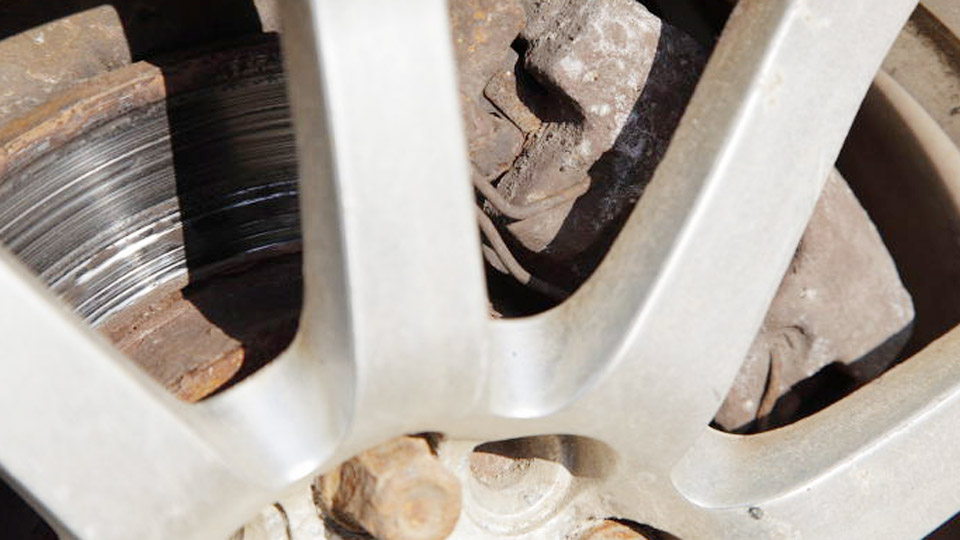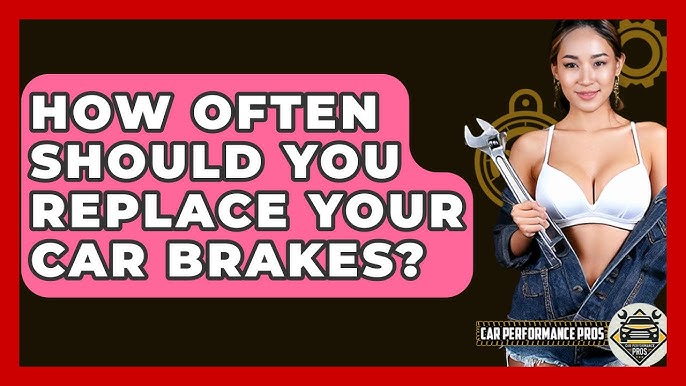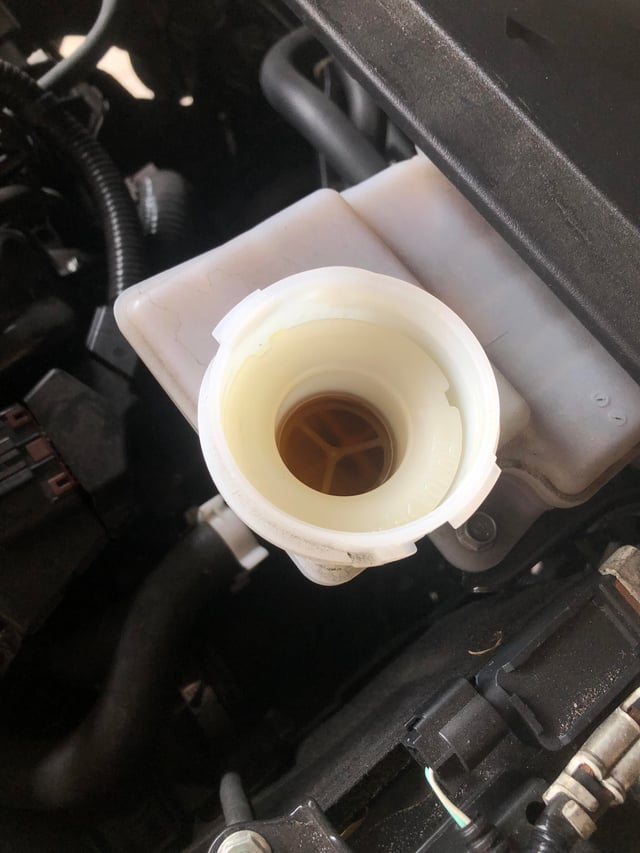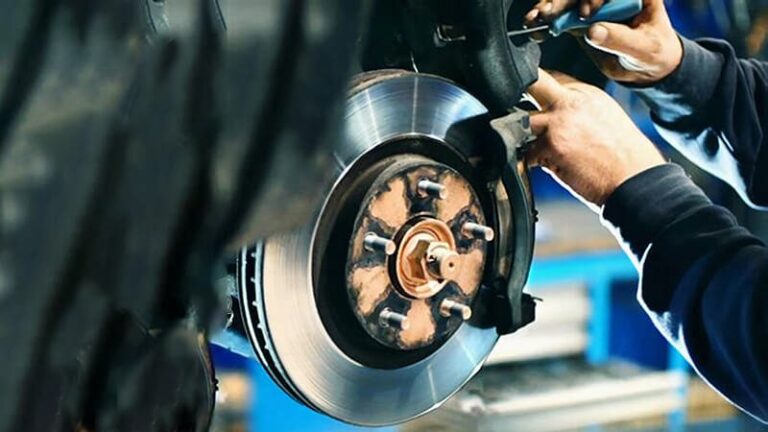I’ve had plenty of cars roll into my garage with all kinds of problems—brake pads worn down to the metal, calipers seized up, or a strange grinding noise that makes any driver nervous. One of the trickiest situations I’ve seen is when someone asks me “How to Move a Car with Locked Brakes?” It’s not just an inconvenience; it’s a safety and cost issue too. If you force the car without knowing what you’re doing, you could damage the wheels, the brake system, or even the transmission.
I’ve dealt with this problem more times than I can count, and one mistake I see car owners make is trying to muscle the car along instead of approaching it smartly. The good news is, with the right approach and a little patience, you can move a car with locked brakes safely—and I’ll walk you through exactly how to do it.

Image by azrust
What Causes Brakes to Lock Up?
Understanding the Brake System
Your car’s brake system is a complex network of hydraulic and mechanical components designed to slow or stop your vehicle. Key players include brake calipers, rotors, pads, brake lines, and the master cylinder. When you press the brake pedal, the master cylinder sends hydraulic fluid through the brake lines to the calipers, which clamp the pads against the rotors to create friction and stop the wheels.
Common Causes of Locked Brakes
Locked brakes happen when one or more components fail to release after braking. From my experience, here are the usual suspects:
- Seized Brake Caliper: The caliper piston gets stuck, keeping the brake pads pressed against the rotor.
- Stuck Parking Brake: A rusty or frozen parking brake cable can prevent the rear wheels from releasing.
- Hydraulic Issues: A clogged brake line or faulty master cylinder can trap pressure, keeping the brakes engaged.
- Warped Rotors: Severely warped rotors can cause uneven contact, mimicking a locked brake.
- Contaminated Brake Fluid: Old or dirty fluid can cause sludge buildup, leading to sticky components.
I once had a customer with a 2015 Ford F-150 who swore their truck was “cursed” because it wouldn’t move. After a quick inspection, I found a seized caliper on the front left wheel—rusted from years of neglect. A replacement caliper and fresh brake fluid fixed it, but it was a reminder of how maintenance can prevent these headaches.
When to Act
If your car feels sluggish, makes grinding noises, or refuses to move despite releasing the brake pedal, it’s time to investigate. Ignoring locked brakes can overheat components, wear out pads prematurely, or even damage your rotors, costing you hundreds in repairs.
Diagnosing Locked Brakes: A Step-by-Step Guide
Step 1: Check for Obvious Signs
Start by observing your car’s behavior. Is it one wheel or all four? Does it happen after parking or during driving? A single locked wheel often points to a caliper or parking brake issue, while all wheels locking suggests a hydraulic problem. I’ve seen DIYers overlook the parking brake—especially in older cars like a 2002 Chevy Silverado where the cable rusted solid after sitting through a wet winter.
Step 2: Inspect the Wheels
Jack up the car (use jack stands for safety) and try rotating each wheel by hand. A locked wheel won’t budge or will feel extremely resistant. Check for heat—locked brakes generate friction, making the wheel hub hot to the touch. Always let it cool before working to avoid burns.
Step 3: Test the Parking Brake
Disengage the parking brake and see if the wheels free up. If not, the cable might be stuck. For manual parking brakes, wiggle the lever to check for tension. For electronic parking brakes (common in newer models like the 2020 Toyota Camry), ensure the system is fully disengaged via the dashboard switch.
Step 4: Inspect the Calipers and Rotors
Remove the wheel to visually inspect the caliper and rotor. Look for signs of rust, uneven pad wear, or a piston that won’t retract. A stuck caliper often leaves one pad pressed against the rotor, causing uneven wear marks.
Tools You’ll Need
- Floor jack and jack stands
- Lug wrench
- Socket set (for caliper bolts)
- C-clamp (for compressing caliper pistons)
- Brake fluid tester
- Torque wrench
Pro Tip
Always work on one wheel at a time and keep the others secure. I learned this the hard way when a buddy’s Dodge Ram rolled off a jack because we didn’t chock the wheels properly.
How to Move a Car with Locked Brakes
Temporary Solutions to Get Moving
If you’re stranded and need to move the car immediately, here’s what you can try (safely):
- Release the Parking Brake: Double-check it’s fully disengaged. For stuck cables, gently rock the car back and forth to loosen it.
- Tap the Caliper: Lightly tap the caliper with a rubber mallet to free a stuck piston. Don’t go Hulk-mode—you’ll damage it.
- Bleed the Brakes: If hydraulic pressure is trapped, bleeding the brakes (releasing fluid from the bleeder valve) can help. Use a brake bleeder kit and catch the fluid in a container.
- Call for Help: If nothing works, tow the car to a shop. Forcing it can damage the drivetrain or tires.
Long-Term Fix: Replacing Faulty Parts
To permanently resolve locked brakes, you’ll likely need to replace components. Let’s break down the key spare parts involved.
Brake Calipers: The Heart of the Issue
What Are Brake Calipers?
Calipers house the brake pads and pistons, clamping them against the rotor to stop the wheel. Most cars in the US, like the Honda Civic or Ford Mustang, use single-piston floating calipers, while performance models might have multi-piston fixed calipers.
Signs of Failure
- Wheel won’t turn or drags
- Uneven pad wear
- Brake fluid leaks around the caliper
- Grinding or squealing noises
When to Replace
Replace a caliper if the piston is seized, the housing is cracked, or there’s significant corrosion. I’ve seen DIYers try to rebuild calipers, but unless you’re meticulous, it’s often not worth the hassle compared to a new or remanufactured unit.
OEM vs Aftermarket Calipers
| Feature | OEM (e.g., Ford, Toyota) | Aftermarket (e.g., ACDelco, Raybestos) |
|---|---|---|
| Price | $100–$300 per caliper | $50–$150 per caliper |
| Quality | Factory-spec, perfect fit | Varies; premium brands match OEM |
| Warranty | 1–2 years | 1 year to lifetime (brand-dependent) |
| Availability | Dealerships, limited online | AutoZone, Advance Auto, Amazon |
| Pros | Guaranteed compatibility, high quality | Affordable, widely available |
| Cons | Expensive, slower delivery | Risk of poor fit with cheap brands |
For a daily driver like a 2018 Chevy Equinox, I’d go with a premium aftermarket caliper from ACDelco or Bosch. They’re half the price of OEM but still reliable. For a performance car, stick with OEM to maintain precision.
Installation Tips
- Prep the Area: Clean the caliper mounting bracket with a wire brush to remove rust.
- Lubricate Properly: Use high-temperature brake grease on the caliper pins to prevent future seizing.
- Torque Correctly: Check your vehicle’s manual for torque specs (usually 20–30 ft-lbs for caliper bolts).
- Bleed the System: After installation, bleed the brakes to remove air bubbles. Start with the wheel farthest from the master cylinder.
Common Mistakes
- Forgetting to Bleed: Air in the lines causes spongy brakes.
- Over-tightening Bolts: This can strip threads or crack the caliper.
- Using Cheap Parts: Bargain calipers from no-name brands often fail within a year.
Spotting Fake Parts
Counterfeit calipers are a real problem, especially online. Look for:
- Packaging: Genuine ACDelco or Bosch parts come in branded boxes with holograms or QR codes.
- Price: If it’s too cheap (e.g., $20 for a caliper), it’s likely fake.
- Markings: OEM parts have stamped part numbers and logos. Fakes often lack these or have misspellings.
Brake Rotors: When Warping Causes Trouble
What Are Brake Rotors?
Rotors are the metal discs that brake pads grip to stop the wheel. They’re typically made of cast iron or composite materials in high-end vehicles.
Signs of Failure
- Vibration when braking
- Grooves or scoring on the rotor surface
- Excessive heat or discoloration
When to Replace
Warped or heavily scored rotors can cause uneven braking, mimicking a locked brake. Replace them if they’re below the minimum thickness (stamped on the rotor edge) or if resurfacing isn’t an option.
OEM vs. Aftermarket Rotors
| Feature | OEM | Aftermarket (e.g., Brembo, PowerStop) |
|---|---|---|
| Price | $80–$200 per rotor | $40–$120 per rotor |
| Quality | Consistent, vehicle-specific | Good for premium brands, variable for budget |
| Durability | Long-lasting | Depends on brand; premium lasts as long |
| Pros | Perfect fit, reliable | Cost-effective, performance options |
| Cons | Pricey | Budget brands wear quickly |
Anecdote: I once replaced rotors on a 2016 Jeep Wrangler for a client who bought cheap eBay rotors. They warped in six months. Switched to Brembo, and they’re still smooth two years later.
Installation Tips
- Clean the Hub: Remove rust from the wheel hub to ensure the rotor sits flat.
- Check Runout: Use a dial indicator to confirm the rotor isn’t wobbling (max 0.002 inches runout).
- Bed the Pads: After installation, perform 10–15 gentle stops from 30 mph to break in new pads and rotors.
Maintenance Tip
Inspect rotors every 12,000 miles or during tire rotations. A quick visual check can catch scoring early, saving you from a full replacement.
Brake Lines and Fluid: The Hydraulic Culprits
What Are Brake Lines and Fluid?
Brake lines are steel or rubber hoses that carry hydraulic fluid from the master cylinder to the calipers. Brake fluid transfers the pressure from your pedal to the brakes.
Signs of Failure
- Soft or spongy brake pedal
- Fluid leaks under the car
- Dark or cloudy brake fluid
When to Replace
Replace brake lines if they’re cracked, rusted, or leaking. Flush and replace brake fluid every 2–3 years or 30,000 miles to prevent contamination, which can cause sticky calipers.
OEM vs. Aftermarket Brake Lines
| Feature | OEM | Aftermarket (e.g., Dorman, Russell) |
|---|---|---|
| Price | $50–$150 per line | $20–$80 per line |
| Quality | High, exact fit | Good for trusted brands |
| Pros | Reliable, no fitment issues | Affordable, stainless steel options |
| Cons | Expensive | Budget brands may leak |
Pro Tip: For older vehicles like a 2005 Dodge Ram, consider stainless steel aftermarket lines for better corrosion resistance.
Installation Tips
- Use a Flare Wrench: Regular wrenches can round off brake line fittings.
- Check for Kinks: Ensure new lines are routed without sharp bends.
- Flush the System: Use DOT 3 or DOT 4 fluid (check your manual) and flush thoroughly.
Common Mistake
Mixing brake fluid types (e.g., DOT 3 with DOT 5) can cause system failure. Always stick to the manufacturer’s spec.
Safety and Maintenance Best Practices
- Work Safely: Always use jack stands, never rely on a jack alone. Wear gloves and safety glasses when handling brake fluid.
- Regular Inspections: Check brake fluid levels monthly and inspect pads/rotors during tire rotations.
- Use Quality Tools: A torque wrench and proper socket set make a huge difference in preventing stripped bolts.
- Keep It Clean: Brake dust and grime can hide issues. Clean components with brake cleaner before reassembly.
Conclusion: Get Back on the Road Confidently
Dealing with locked brakes can feel overwhelming, but with the right knowledge and parts, you can tackle it like a pro. Whether it’s a seized caliper, warped rotor, or clogged brake line, diagnosing the issue early saves time, money, and stress. Stick to trusted brands like ACDelco, Bosch, or Brembo for aftermarket parts, or go OEM for guaranteed compatibility. Always prioritize safety—use proper tools, double-check your work, and bleed the system thoroughly.
FAQ: Common Questions About Locked Brakes and Spare Parts
How Do I Know If My Brake Caliper Is Seized?
A seized caliper causes one wheel to drag, feel hot, or show uneven pad wear. Jack up the car, try spinning the wheel, and inspect the caliper for rust or a stuck piston.
Can I Drive with a Locked Brake?
No, it’s unsafe. Driving with locked brakes can overheat components, damage tires, or cause loss of control. Fix it immediately or tow the car.
Are Aftermarket Brake Parts as Good as OEM?
Premium aftermarket brands like ACDelco or Brembo often match OEM quality at a lower price. Avoid no-name brands, as they may fail early or fit poorly.
How Often Should I Replace Brake Fluid?
Flush and replace brake fluid every 2–3 years or 30,000 miles to prevent contamination, which can lead to locked brakes.
What Tools Do I Need to Replace a Brake Caliper?
You’ll need a floor jack, jack stands, lug wrench, socket set, C-clamp, brake bleeder kit, and a torque wrench. Use high-temperature brake grease for lubrication.



